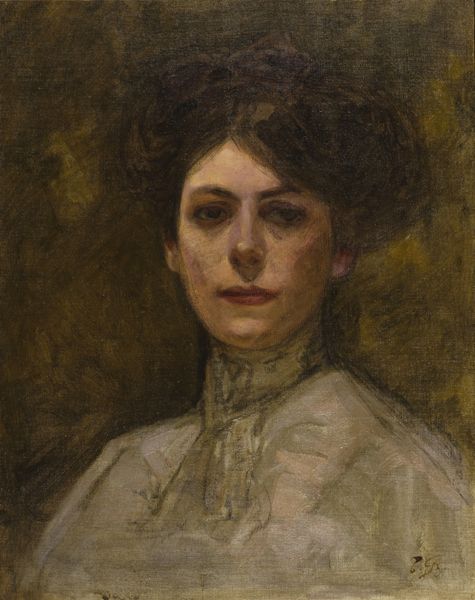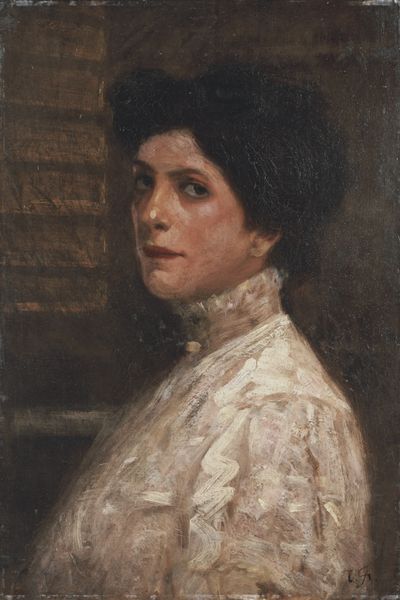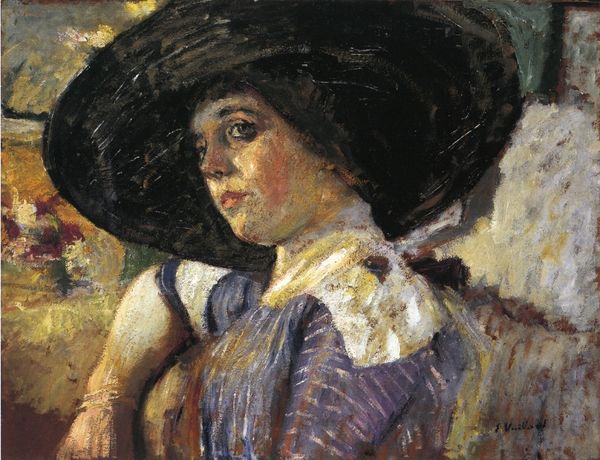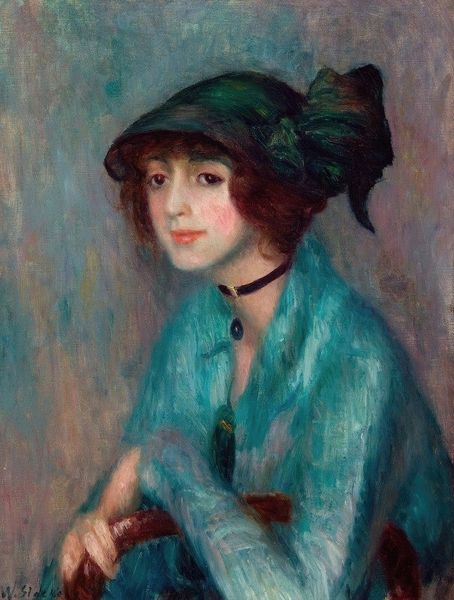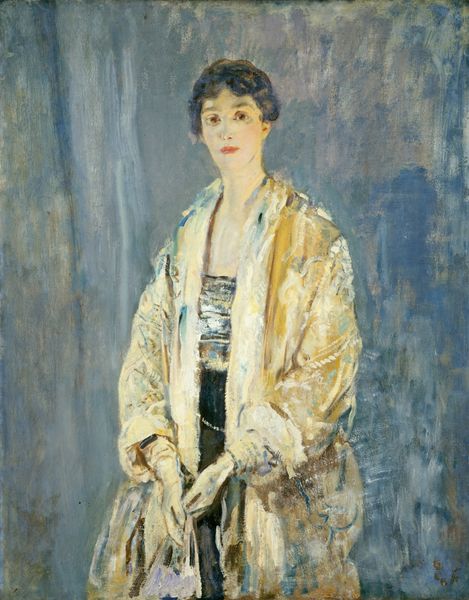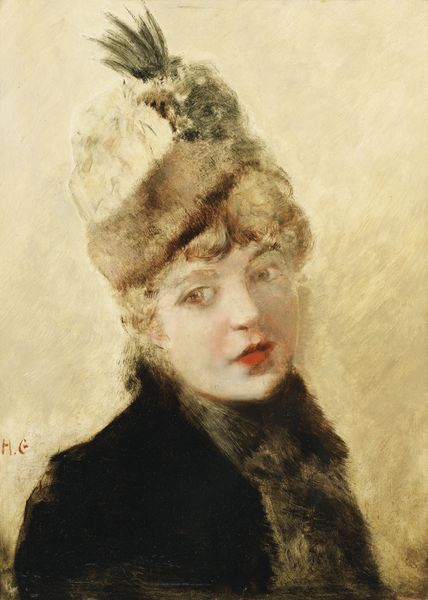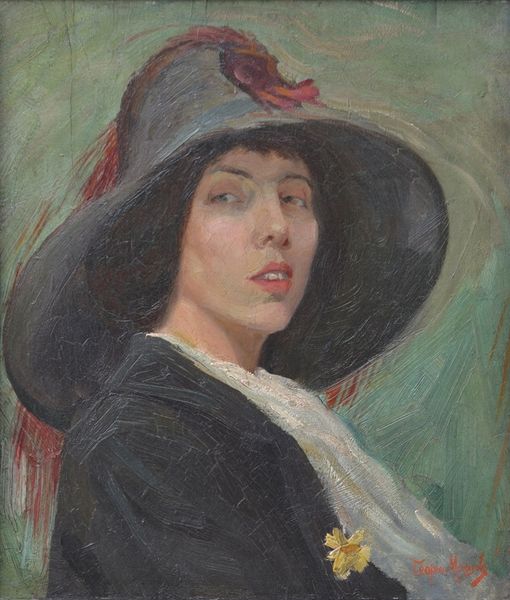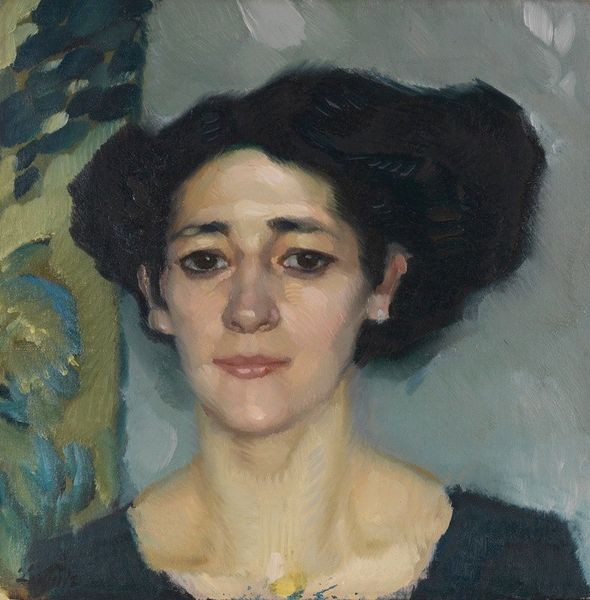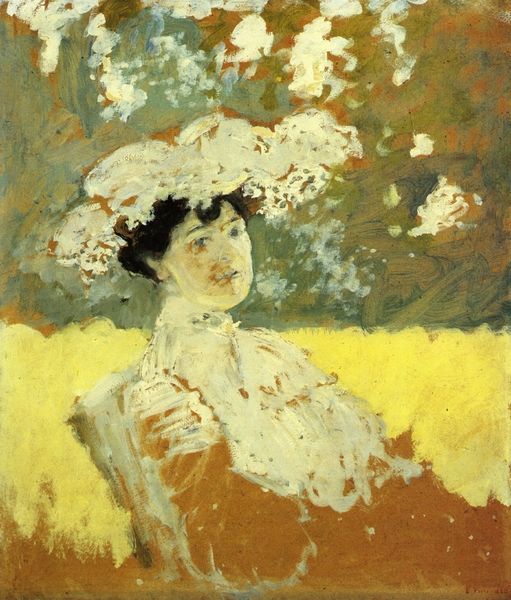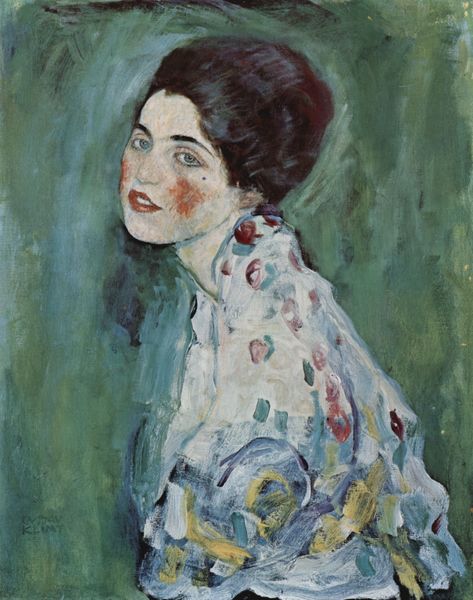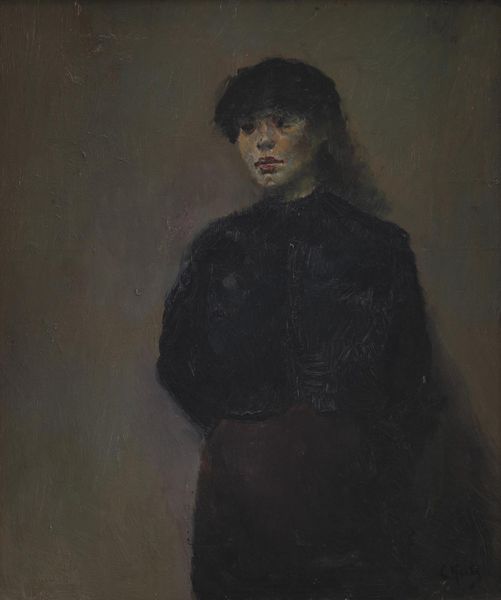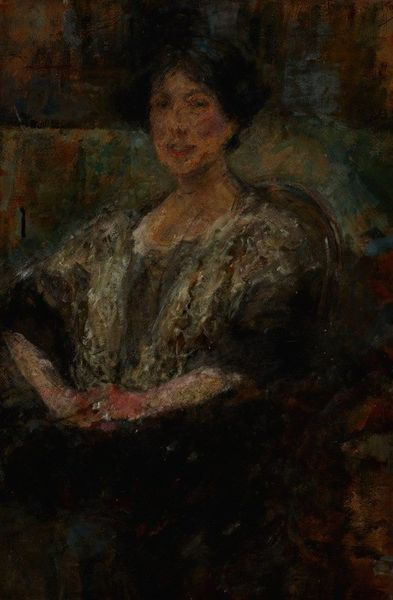
Dimensions: 57.8 × 48.3 cm (22 3/4 × 19 in.)
Copyright: Public Domain
Curator: There's a delicate melancholic quality in this early 20th century "Portrait of a Woman," circa 1900, by Charles Cottet, rendered in oil on canvas, currently residing here at the Art Institute of Chicago. What is your first reaction? Editor: An air of quiet drama surrounds her. The stark contrast between the soft face and the darker tones suggests a story waiting to be told, a play of concealment and revelation. The hat feels almost too large for her. Curator: Yes, Cottet, emerging from the shadow of Impressionism, captured that liminal space perfectly. It reflects the societal constraints of women while subtly hinting at their burgeoning inner lives, visible in public life through suffragist marches and a growth in arts and literature. Editor: Indeed. Her face, lit almost ethereally, holds our gaze while the dark clothing absorbs light. That flower pinned to the hat – it could be a symbol of transient beauty, of hope momentarily bright before fading? And the shadows, don't you think they reflect the social expectations bearing down on her? Curator: That could be true! He was moving in social realist circles that often touched on themes of class and alienation during La Belle Epoque, and in art exhibitions these became talking points among a more politically charged bourgeoisie. There's a consciousness, or rather a social consciousness in how he frames the model's place within the domestic space... It also feels like this model could also be from that rising class of intellectuals. Editor: And that slightly averted gaze makes it harder to pigeonhole her into one status or another, and she retains a measure of mystery. But consider this: portraits of this period, filled with so much symbolic communication, it always came across the challenges facing women. The artist uses subtle cues, in her posture and her clothing, her presence and poise that could convey so much, especially in such a public setting, don't you agree? Curator: Precisely! He's inviting the viewer to read beyond the surface, beyond the conventions. The politics of imagery back then really set the stage for contemporary artistic discussions surrounding gender representation in art galleries. Editor: In conclusion, while the artist and subject have long gone, the silent questions asked here still echo. It reminds us that portraits do more than simply capture likenesses. Curator: Right, they reflect an active dialogue between society and individual aspiration as interpreted by an artist in a unique and important moment in time.
Comments
No comments
Be the first to comment and join the conversation on the ultimate creative platform.
